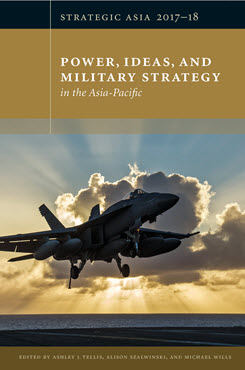U.S. Strategy
Confronting Challenges Abroad and Constraints at Home
This chapter explores the continuities in U.S. grand strategy and national military strategy, assesses how U.S. military strategy is produced through the interaction of material capabilities and strategic culture, describes threats to the strategy of power projection, and outlines the need to develop a long-term strategy to defend U.S. interests in an increasingly contested security environment.
Executive Summary
MAIN ARGUMENT
Since the end of World War II, the U.S. has pursued a grand strategy of global primacy supported by efforts to achieve and maintain favorable regional balances of power. In the service of that grand strategy, the U.S. has pursued a military strategy based on forward-stationed forces backed by power projection. Across the decades, this approach has periodically been questioned from the left and the right of the political spectrum. The renewed debate over a strategy of primacy coincides with the rise of great-power competitors such as China and Russia and the spread of precision-strike capabilities, which are calling into question the military strategy of power projection. As a result, the U.S. finds itself in an increasingly unfavorable position in a series of regional military balances, which could ultimately threaten its global primacy.
POLICY IMPLICATIONS
- Those who favor an engaged, internationalist strategy backed by military power will increasingly need to elucidate their arguments both at home and abroad. The logic underpinning those strategies is no longer self-evident to many.
- The U.S. needs to prepare seriously for the reality of great-power competition and the rising possibility of great-power war, something it has not had to do in more than a quarter century.
- The U.S. must develop a long-term strategy to compete with China, one that allows it to defend its interests at an acceptable price while increasing the costs of Chinese expansion and rechanneling Beijing’s efforts in less threatening directions.
Strategic Asia
The Strategic Asia annual edited volume incorporates assessments of economic, political, and military trends and focuses on the strategies that drive policy in the region. Learn more about Strategic Asia.



